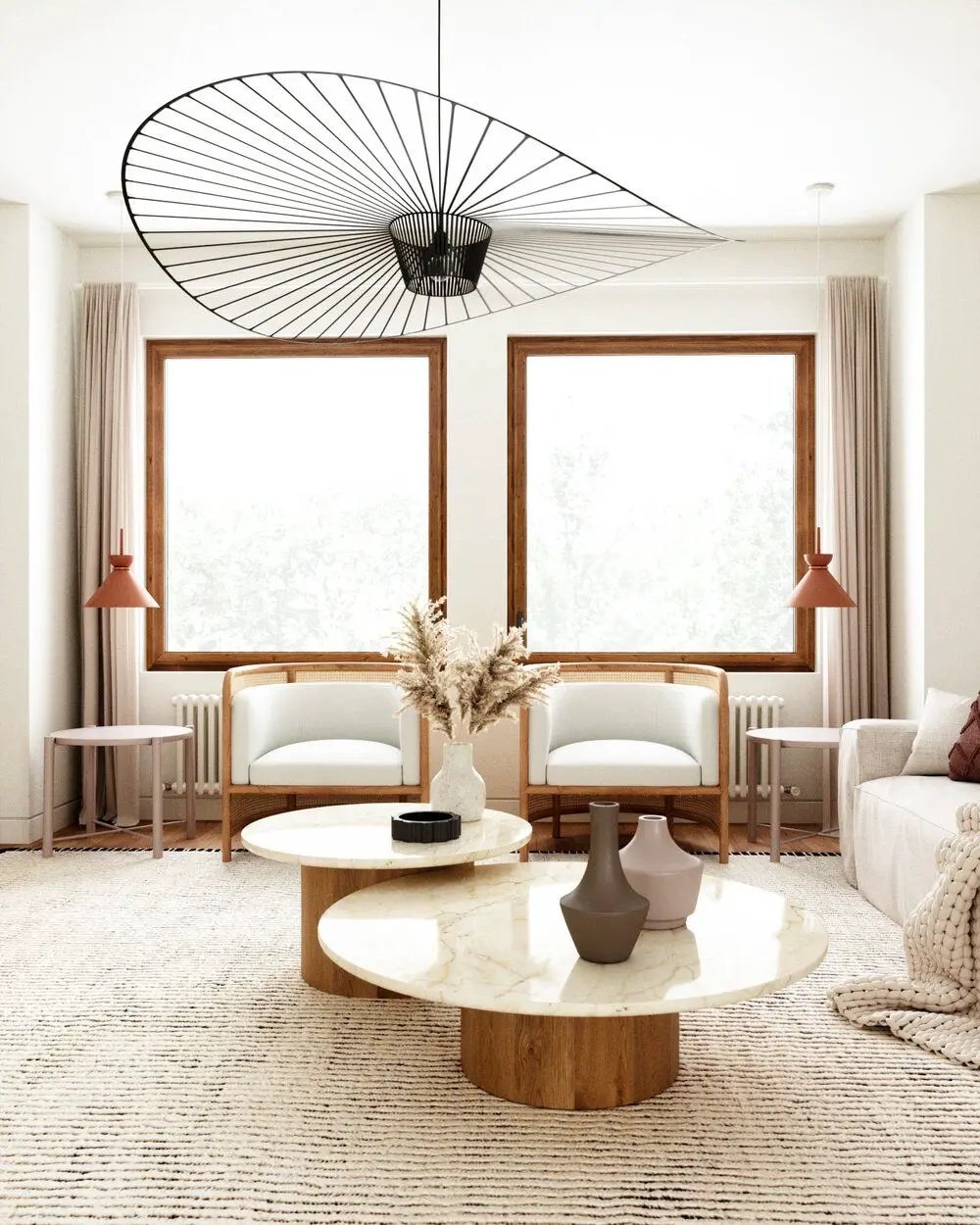When it comes to interior design, there are various techniques that can be used to create a visually appealing and functional space. In this article, we will explore some key concepts in interior design, including the optical midpoint, focal points, lines, and placement.
The Optical Midpoint
According to the theory of the golden ratio, centering an object is not always optimal. The concept of the optical midpoint, which is often used in graphic design, arises from the same thinking: the perceived optical midpoint and the geometric midpoint can be different. The optical center lies about 10 percent above the geometric center. This explains why the focal point of an advertisement is not usually at the geometric center, and more space is left in the lower part than in the upper part. Similarly, the bottom part of the mounts in picture frames is often wider than the top parts so that the image sits slightly above the geometric midpoint.
Focal Points
Focal point, image from L’Essenziale
A focal point is a way of guiding the eye to a specific element in a room or design. It can be a natural feature, such as a beautiful view or a fireplace, or it can be created by the designer. When planning an interior design, it is essential to consider what the focal point should be and how it can be emphasized. Variations in color, contrast, and placement tend to stand out and attract attention. It is important to work with the lines in the room to create optical illusions that make the focal point more prominent.
Lines
Using lines in interior design, image from Fixthephoto.com
Lines are an essential element of interior design and can be used to create depth, direction, and emphasis. Leading lines are natural lines in the surrounding environment that can be used to lead the eye to a particular place or object. Diagonal lines, which emerge at an angle from the triangular concept, can lead the eye obliquely upward or downward. Horizontal lines can make a room feel wider, while vertical lines can draw the eye upward.
Placement
Placement of furniture, image from Bark&Chase
The placement of furniture, decor, and other elements in a room is critical to achieving a cohesive and functional design. It is essential to consider how the lines in the room run and how they can be used to guide the eye. Grouping objects in various formations can emphasize a line and lead the eye to the focal point. It is important to create balance and harmony in the design by considering the overall composition and how each element interacts with the others.
Understanding the importance of optical midpoints, focal points, lines, and placement is critical to creating a visually appealing and functional interior design. By using these techniques, designers can guide the eye to specific elements in the room and create a sense of depth, direction, and emphasis.




